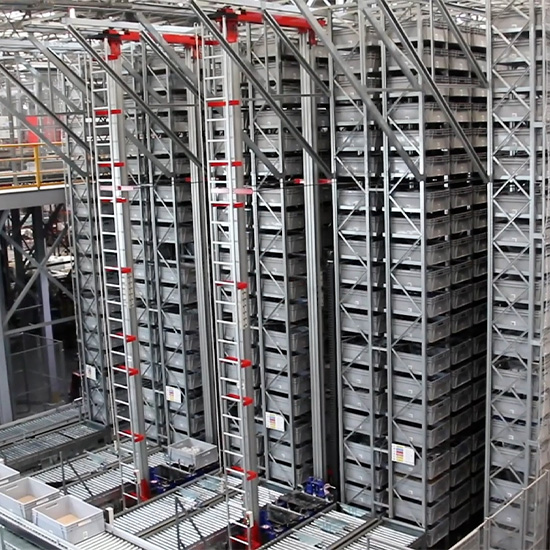The Argentinian company Sinteplast doubles its picking capacity thanks to intralogistics automation
SINTEPLAST
Under the slogan: “Make your dreams come true” Sinteplast, a paint manufacturer, has implemented a fully automated intralogistics solution together with its partner ULMA Handling Systems.
Thanks to automation, we have increased our delivery capacity from 250,000 litres per day to 500,000 litres.
Requirements
In 1958, the Argentinian company Sinteplast was founded, and today it is the leader in the paint market. Innovation, development, and commitment were and have been key to the company's development and consolidation.
The problems Sinteplast encountered led to the automation of its distribution centre: high saturation in its warehouses with an occupation of 95%, leading to restrictions in both storage capacity and picking.
“We had a free surface area of 3,000m2 to expand our warehouse, but if we built it in a conventional way, we could only achieve 4,000 additional locations. If we were to choose an automated storage solution, however, we would have space to store 18,000 pallets in a 40-metre-high warehouse”, said Martin Müller, Planning and Logistics Manager at Sinteplast.
The intralogistics automation developed by ULMA Handling Systems has allowed Sinteplast to increase its dispatch capacity from 250,000 litres per day to 500,000 litres per day.
Proposed solution
Today, the Argentinian paint company has an automated intralogistics solution that makes it possible to meet all the orders received at the Sinteplast facilities, automating from the reception of the goods to their dispatch
Finished product inputs to the Sinteplast smart warehouse are managed by an STV (Sorting Transfer Vehicle) system. The automated warehouse consists of 10 aisles, where 5 unit load pallet stacker cranes operate. The stacker cranes can be exchanged between the different aisles thanks to the traverser installed.
The solution developed by ULMA Handling Systems is fully scalable. In the event that Sinteplast obtains an increase in orders, it can include more stacker cranes, thus increasing its capacity for movements inside the automated warehouse.
“Thanks to the automated solution we have identified a dramatic decrease in inventory adjustments and picking errors”, stated Martin Müller. “In our facilities we used to follow the person-to-product concept, but today, it is the product that comes to the person”, he continued.
Sinteplast has 5 picking stations under the Product to Person concept and is able to pick up to 25 orders simultaneously.
“The system has great flexibility because it works in two subsystems: a pallet subsystem and a plastic basket subsystem, allowing both small and large orders to be attended”, continued Martin Müller. Once the picking is completed in the pallet area, the orders are then consolidated in the plastic basket area, which is managed by a mini-load automated warehouse.
In this subsystem the pallet is completed with the small items to be finally transported to the dispatch area.
Result
Thanks to the intralogistics automation of the Sinteplast facilities, the paint manufacturer has doubled its picking capacity, increasing its delivery capacity from 250,000 litres to 500,000 litres per day.
The automated warehouse and picking solution have allowed for maximum optimisation of storage space and gains in productivity and efficiency in Sinteplast's intralogistics process. In addition, thanks to its scalability and flexible design, the installation allows future extensions.
Talk to us
Do you want to improve your productivity and be more efficient in your logistics?
Request information


.jpg)
.jpg)
.jpg)